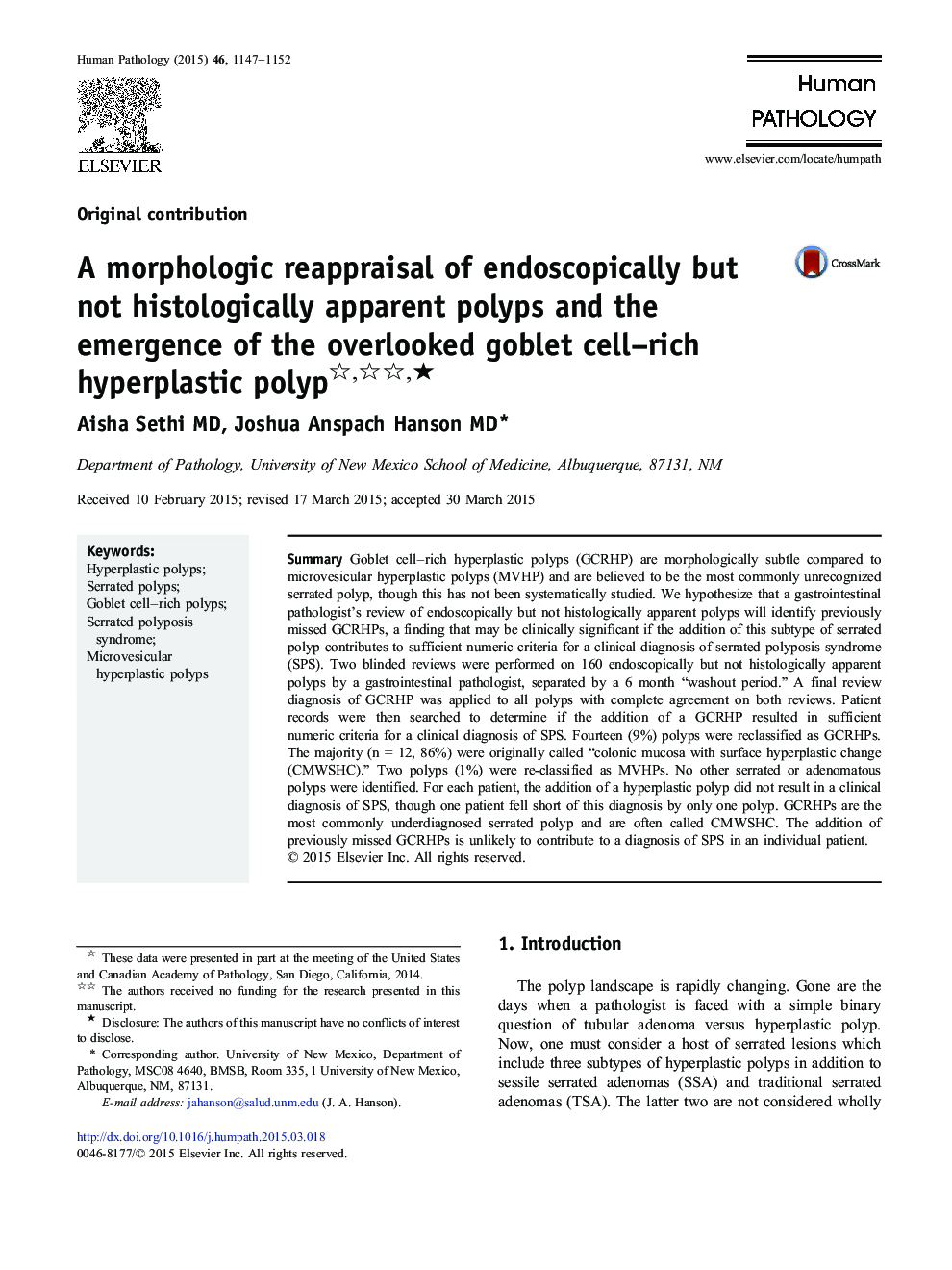| Article ID | Journal | Published Year | Pages | File Type |
|---|---|---|---|---|
| 4132638 | Human Pathology | 2015 | 6 Pages |
SummaryGoblet cell--rich hyperplastic polyps (GCRHP) are morphologically subtle compared to microvesicular hyperplastic polyps (MVHP) and are believed to be the most commonly unrecognized serrated polyp, though this has not been systematically studied. We hypothesize that a gastrointestinal pathologist’s review of endoscopically but not histologically apparent polyps will identify previously missed GCRHPs, a finding that may be clinically significant if the addition of this subtype of serrated polyp contributes to sufficient numeric criteria for a clinical diagnosis of serrated polyposis syndrome (SPS). Two blinded reviews were performed on 160 endoscopically but not histologically apparent polyps by a gastrointestinal pathologist, separated by a 6 month “washout period.” A final review diagnosis of GCRHP was applied to all polyps with complete agreement on both reviews. Patient records were then searched to determine if the addition of a GCRHP resulted in sufficient numeric criteria for a clinical diagnosis of SPS. Fourteen (9%) polyps were reclassified as GCRHPs. The majority (n = 12, 86%) were originally called “colonic mucosa with surface hyperplastic change (CMWSHC).” Two polyps (1%) were re-classified as MVHPs. No other serrated or adenomatous polyps were identified. For each patient, the addition of a hyperplastic polyp did not result in a clinical diagnosis of SPS, though one patient fell short of this diagnosis by only one polyp. GCRHPs are the most commonly underdiagnosed serrated polyp and are often called CMWSHC. The addition of previously missed GCRHPs is unlikely to contribute to a diagnosis of SPS in an individual patient.
